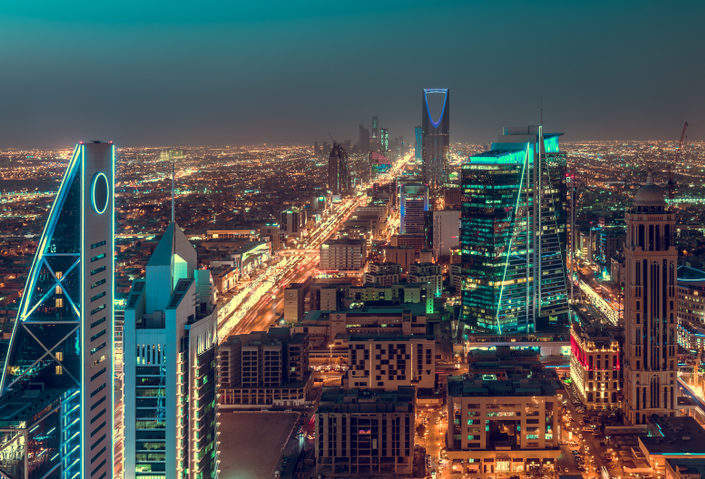
September marks the start of a fresh business season in the Middle East, and the region remains a market that cannot be ignored. Oil has been above $60 a barrel since January, so leading Middle East markets will continue to be solvent, liquid and creditworthy.
In July, the IMF forecast Saudi Arabia’s current account surplus will be more than $60bn this year and next. That will be around 9% of the forecast GDP in both years.
The big three Middle East markets
The kingdom’s budget deficit is projected to fall by almost half and the IMF expects it to be 1.7% of GDP in 2019. That is comfortably financeable. Saudi Arabia’s government debt-to-GDP ratio, despite massive public borrowing since 2013, will still be only 20% of GDP by the end of next year.
The GCC’s other two major markets – Kuwait and the UAE – will record healthy balance of payments surpluses. The governments of both will have more money to spend this autumn.
The big Gulf three will import more than $300bn-worth of goods and services this year. However, elsewhere in the Middle East and North Africa, the story is patchy.
Higher oil prices and production are boosting Iraq, but protests in the south about economic mismanagement, and a persisting insurgency compounded by divisions within Iraqi Kurdistan and between the region and central government, are damaging business confidence.
How well do you really know your competitors?
Access the most comprehensive Company Profiles on the market, powered by GlobalData. Save hours of research. Gain competitive edge.

Thank you!
Your download email will arrive shortly
Not ready to buy yet? Download a free sample
We are confident about the unique quality of our Company Profiles. However, we want you to make the most beneficial decision for your business, so we offer a free sample that you can download by submitting the below form
By GlobalDataHopes that Iran could become one of the Middle East’s best markets have been shattered by the decision by the US to withdraw from the 2015 nuclear agreement with the Islamic republic. Some US sanctions were reimposed at the start of August and tougher ones relating to oil exports will begin in November.
This squeeze on Iran is weighing on business prospects in Dubai, which has for decades sold itself as an efficient gateway to the country.
Egypt’s economy is recovering, but remains in intensive care. Algeria, which is benefitting from higher hydrocarbon export prices, is no substitute for the opportunities being lost in the Gulf.
All other Middle East markets are either small, blighted or both.
There are many minefields for business in the region. But there is nothing new in that. The Middle East has always been a place where it has been feast when oil is up or famine when it’s not.
The gap between the good markets and the rest is enormous and growing. And once again, the region’s failure to realise its potential is at least partly self-inflicted.
The oil price rebound – likely to continue in part due to expectations Iranian oil exports will fall – means good times should return for some. Politics means they won’t for most.
This article is sourced from Verdict’s sister publication www.meed.com, a leading source of high-value business intelligence and economic analysis about the Middle East and North Africa. To access more MEED content register for the 30-day Free Guest User Programme.







